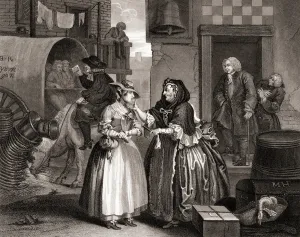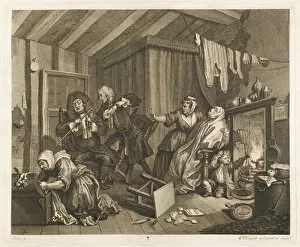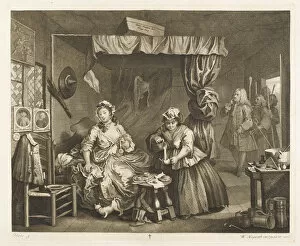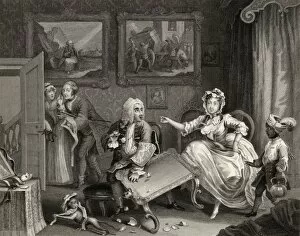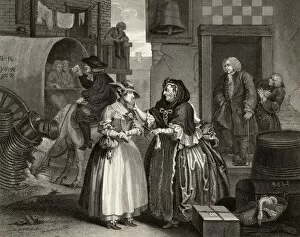Harlots Collection
In the 18th century, English artist William Hogarth created a series of prints titled "A Harlots Progress
All Professionally Made to Order for Quick Shipping
In the 18th century, English artist William Hogarth created a series of prints titled "A Harlots Progress, " depicting the tragic downfall of a young woman named Moll Hackabout. These prints, etchings that showcased Hogarth's keen eye for detail and social commentary, captured the moral decay and societal pressures faced by women in that era. Plate 1 introduces us to Moll as an innocent country girl who arrives in London with dreams of a better life. However, Plate 2 reveals her transformation into a harlot under the influence of corrupting influences. The subsequent plates depict her descent into prostitution and its consequences. Hogarth's portrayal is not meant to glorify or sensationalize but rather to expose the harsh realities faced by women like Moll during this time period. His attention to detail highlights the squalor and exploitation these women endured while also critiquing society's complicity in their plight. The Prodigal Son among the Harlots painting further emphasizes this theme, illustrating how temptation can lead one astray from virtuous paths. It serves as a cautionary tale about succumbing to worldly desires without considering their long-term consequences. Through his artistry, Hogarth sheds light on an often overlooked aspect of history—the lives of harlots—and challenges viewers to confront their own judgments and preconceptions about these individuals. His work forces us to question our society's treatment of marginalized women throughout history and encourages empathy towards those trapped in desperate circumstances. "The Harlots Progress" remains relevant today as it reminds us that behind every seemingly scandalous story lies real people with complex lives shaped by societal factors beyond their control. It serves as both an artistic masterpiece and a powerful social critique that continues to resonate centuries later.



